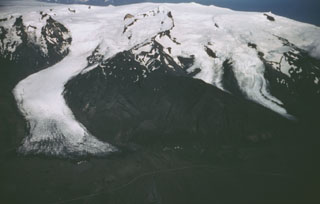Report on Oraefajokull (Iceland) — 11 July-17 July 2018
Smithsonian Institution / US Geological Survey
Weekly Volcanic Activity Report, 11 July-17 July 2018
Managing Editor: Sally Sennert.
Please cite this report as:
Global Volcanism Program, 2018. Report on Oraefajokull (Iceland) (Sennert, S, ed.). Weekly Volcanic Activity Report, 11 July-17 July 2018. Smithsonian Institution and US Geological Survey.
Oraefajokull
Iceland
64°N, 16.65°W; summit elev. 2010 m
All times are local (unless otherwise noted)
After a series of meetings between the Icelandic Meteorological Office, the University of Iceland, and Iceland Geosurvey, the Iceland Department of Civil Protection and Emergency Management stated on 13 July that Öræfajökull has shown clear signs of unrest for at least the past year and a half. The report noted ongoing inflation and increased seismicity, despite a decrease in geothermal activity since December 2017. The volume change since the beginning of the unrest was about 10 million cubic meters, likely from an injection of new magma.
Geological Summary. Öræfajökull, Iceland's highest peak, is a broad glacier-clad central volcano at the SE end of the Vatnajökull icecap. A 4 x 5 km subglacial caldera truncates the summit of the dominantly basaltic and rhyolitic volcano. The extensive summit icecap is drained through deep glacial valleys dissecting the SW-to-SE flanks. It is the largest-volume volcano in Iceland, and was mostly constructed during Pleistocene glacial and interglacial periods. Holocene activity has been dominated by explosive summit eruptions, although flank lava effusions have also occurred. A major silicic eruption in 1362 CE was Iceland's largest historical explosive eruption. It and another eruption during 1727-28 were accompanied by major jökulhlaups (glacier outburst floods) that caused property damage and fatalities.

